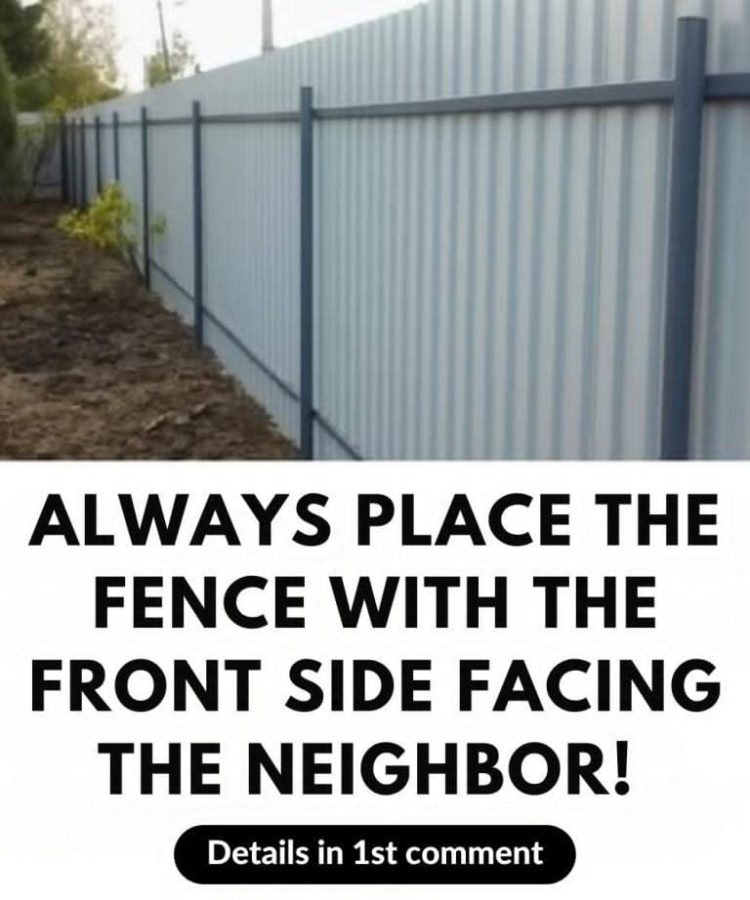3. Increases Property Value
The quality and appearance of your fence can affect your home’s marketability. A beautifully installed fence that looks good from all sides makes your property more appealing.
Real estate experts often mention fences as an important part of curb appeal and value—especially when neighbors’ properties are neat and complementary.
4. Protects the Fence Structure
When you place the fence with the support rails facing your property, the posts and rails are shielded from harsh weather conditions like sun, wind, and rain, which tend to cause wood rot and metal corrosion.
This orientation can increase the fence’s lifespan and reduce costly repairs.
5. Compliance with HOA and Local Regulations
HOAs frequently require that the finished side face outward toward neighbors or the street. Compliance helps avoid fines, forced removal, or required replacements.
Common Mistakes and How to Avoid Them
Even with the best intentions, mistakes can happen during fence installation. Here are some common pitfalls and how to avoid them:
Mistake 1: Installing Fence with Back Facing Neighbor
How to Avoid: Always inspect fence panels before installation and confirm which side is the “good” side. If hiring a contractor, specify the requirement clearly.
Mistake 2: Building Fence Inside Neighbor’s Property
How to Avoid: Get an accurate survey or confirm boundaries before digging holes or erecting fence posts.
Mistake 3: Neglecting to Communicate with Neighbor
How to Avoid: Talk to your neighbor beforehand and explain your plans. This builds goodwill and prevents misunderstandings.
Mistake 4: Not Following HOA or Local Rules
How to Avoid: Check local building codes and HOA rules before starting construction to ensure your fence complies.
Mistake 5: Using Poor-Quality Materials
How to Avoid: Invest in durable materials suitable for your climate and maintenance capacity. Proper materials combined with good orientation create lasting fences.
Alternative Fence Orientation Situations: When to Deviate?
While the general rule is to place the front facing your neighbor, there are situations where you might consider alternative approaches:
Shared Fence with Joint Ownership
Some neighbors agree to share fence maintenance and costs, building the fence on the property line with both sides equally finished. This is ideal for avoiding disputes and ensuring fairness.
Fencing with Public Areas or Streets
If your fence borders a street or public space, the finished side should generally face outward for better curb appeal and compliance with neighborhood norms.
When Neighbor Prefers the Fence Orientation
In rare cases, neighbors may request that the fence be installed a certain way. Respecting their wishes can maintain harmony, especially if they share maintenance responsibilities.
Maintaining Your Fence and Neighborly Relations Over Time
Installing your fence with the front facing your neighbor is just the beginning. Maintaining the fence and your relationship with neighbors is an ongoing process.
Regular Fence Maintenance Tips
- Inspect your fence yearly for damage or wear.
- Clean the fence with gentle soap and water.
- Re-stain or repaint every few years to protect the wood.
- Repair loose boards or broken posts promptly.
Communication and Cooperation
- Inform your neighbor about any repairs or changes you plan to make.
- Offer to split costs for shared fences.
- Respect privacy and noise considerations.
- Maintain a friendly attitude, even when issues arise.
Final Thoughts
Fences are more than just practical barriers—they are part of the fabric of your neighborhood community. Always placing your fence with the front facing your neighbor is a simple, respectful, and smart approach that fosters goodwill, increases property value, and protects your investment.
Whether you’re building your first fence or replacing an old one, following this guideline ensures a beautiful, durable, and neighbor-friendly boundary.
By putting thought into your fence orientation, communicating with your neighbor, and maintaining the fence properly, you create not just a barrier but a bridge to better neighbor relations and a more pleasant living environment.
